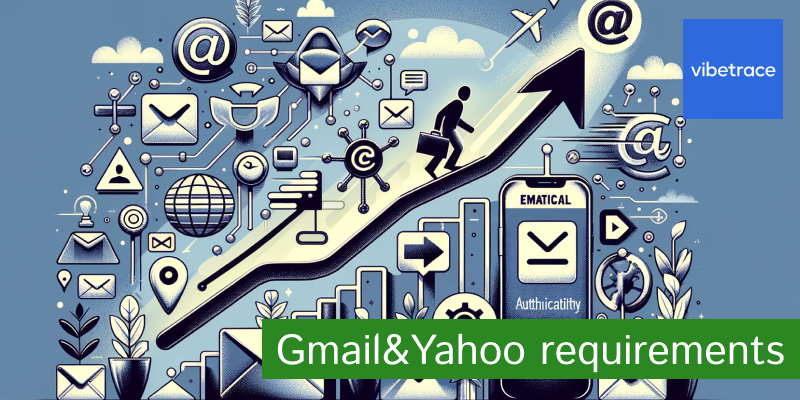In the year 2024, significant changes are occurring with Google and Yahoo in the realm of email authentication practices. What were once merely regarded as “good to do” practices have now evolved into “must-dos.”
Failure to adhere to these new requirements could result in your emails failing to reach their intended destinations.
While Google has extended its enforcement deadlines for sender requirements from February to April and one-click unsubscribes to June, it is vital to emphasize that Vibetrace has already aligned itself with these standards.
In the following sections, we will delve into the Google/Yahoo requirements that our platform has already met and provide guidance for our customers to ensure full compliance.
We are confident that these changes will enhance the email experience for our customers, aligning our communication strategies with the best practices recommended by major mailbox providers.
We are here to assist you in navigating these new requirements. Should you have any inquiries or require further clarification, do not hesitate to reach out to your account manager or our customer support team.
Vibetrace’s Compliance with Email Requirements
Default Email Provider
Our default email provider is Sparkpost (MessageBird). They are focusing on providing it’s customers the best experience with respect to the best industry practices. We follow those rules from the beginning, so all our customers are safe.
As a Vibetrace customer, you can rest assured that we have taken care of the new requirements on your behalf.
For all Vibetrace customers. Domain Authentication required
Requirement 1: Set up SPF and DKIM email authentication for your domain.
Our platform ensures compliance with this requirement by mandating the use of a valid DKIM key and an SPF record.
Requirement 2: Ensure that sending domains or IPs have valid forward and reverse DNS records (PTR records).
All Vibetrace IPs, including those in our BYOIP (Bring Your Own IP) program, are equipped with PTR records. These records confirm the association of the sending hostname with the sending IP address, and all our hostnames possess forward DNS entries that accurately point to their respective sending IP addresses.
Requirement 3: Use a TLS connection for transmitting email.
In pursuit of optimal security and stability for our customers, we provide support for TLSv1.1 or higher.
Requirement 4: Format messages according to the Internet Message Format standard (RFC 5322).
Vibetrace is fully aligned with RFC 5322.
Requirement 5: If you regularly forward email, including using mailing lists or inbound gateways, add ARC headers to outgoing email.
As Vibetrace does not function as a relay, this requirement does not apply to us.
Requirement 6: Marketing messages and subscribed messages must support one-click unsubscribe, and include a clearly visible unsubscribe link in the message body.
Vibetrace adheres to this requirement by employing the ‘mailto’ method in the List-Unsubscribe header, which is considered a one-click solution. In the future, we will include an HTTPS URI alongside the ‘mailto’ in our unsubscribe header if it becomes mandatory, in conjunction with the List-Unsubscribe-Post header.
It is important to note that the responsibility for the unsubscribe link in the message body lies with our customers (see below).
Our Customer’s Responsibilities
- Manage Spam Rates: Keep spam rates below 0.10% and avoid exceeding 0.30%. You can mitigate deliverability issues stemming from spam traps by consulting our comprehensive guide, which covers various types and sources of traps and offers recommendations for resolution.
- Include Unsubscribe Link: Ensure that each message includes a prominently visible unsubscribe link in the body to enhance recipient engagement and efficiency.
- DMARC Email Authentication: Per Google’s guidelines, if your daily email volume surpasses 5,000 messages, it is advisable to establish a DMARC record for your sending domain. Nevertheless, it is considered a best practice to implement a DMARC record for all sending domains, regardless of email volume. An initial recommended configuration is to set the policy to “none.” Additionally, ensure alignment of the sender’s From: header with either the SPF domain or the DKIM domain.
For more in-depth information, please refer to:

